G.G. George, the Phoenix author of the new book, “The Arizona State Fair,” has a history of preservation activism dating back to the 1960s and remains an active voice in the historic community today.
“G.G. George is the Energizer Bunny of historic preservation,” said Kathryn Leonard, the Arizona State Historic Preservation Officer.
Most recent, the Norton House and all of Encanto Park were listed on the National Register of Historic Places. This completed a project led by George, the president and founder of the Encanto Citizens Association, and the president of the Phoenix Historic Neighborhoods Coalition, to put the entire Encanto Neighborhood on the National Register, which was started in the 1970s.
And these are only a few of her accomplishments.
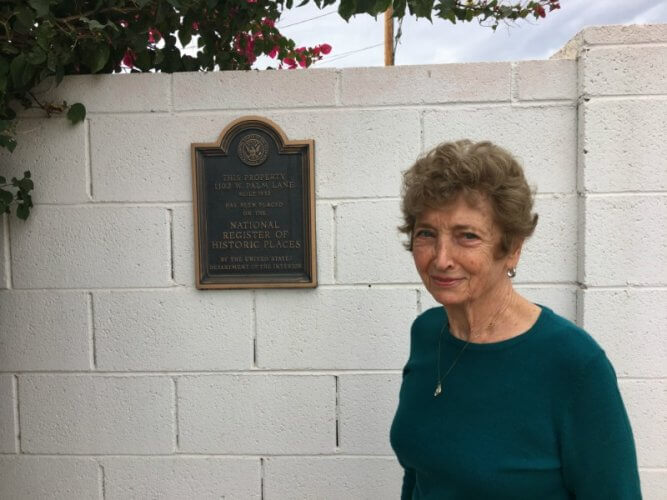 “G.G. has always been an extremely valuable voice in the historic preservation movement in Phoenix and it dates back to when all of our historic districts downtown were considered blighted, and nobody wanted to live in them,” said Leonard.
“G.G. has always been an extremely valuable voice in the historic preservation movement in Phoenix and it dates back to when all of our historic districts downtown were considered blighted, and nobody wanted to live in them,” said Leonard.
Papago Freeway
George began her work back in 1969 when she heard the plan to construct the I-10 Papago Freeway was displacing residents from their homes. These homes were in the area known as the Moreland Corridor, located between McDowell and Roosevelt Streets and Central and 19th Avenue.
At the time, the Arizona Highway Department, now known as the Arizona Department of Transportation, was offering homeowners less than what their houses were worth so that they could begin construction on the freeway, according to George.
“The freeway fight spurred preservation awareness,” said George. “The homes they were tearing down in the Moreland Corridor were just as nice as this house, just as old and even older,” said George, referring to her home in the Encanto-Palmcroft neighborhood.
George was invited to a meeting by a group known as Citizens for Mass Transit Against Freeways which included a group of concerned neighbors who wanted to make a difference. George attended the meetings, heard the stories from the people who lost their homes, and wanted to help in some way.
“She really was instrumental in saying ‘Hey, these houses have value,’” said Leonard.
According to George, the people in this neighborhood had no idea there was anything they could do to stop the construction of the freeway until a few activists organized the neighborhood. Nearly 2,000 neighbors came together to express their dissent against the construction.
In 1973, a vote appeared on the ballot which determined the fate of the freeway. The Citizens for Mass Transit Against Freeways and preservation advocates won their first battle when construction of the freeway was voted down.
The Department of Transportation had to scrap their original plan for the Papago Freeway, which led to the development of a new plan of an I-10 tunnel under Margaret T. Hance Park.
Arizona State Fairgrounds
Over the years, George has worked on countless other efforts to preserve historic buildings. Most recent, when the Works Progress Administration (WPA) building, located on the Arizona State Fairgrounds, was threatened with demolition, George supported the effort to save it.
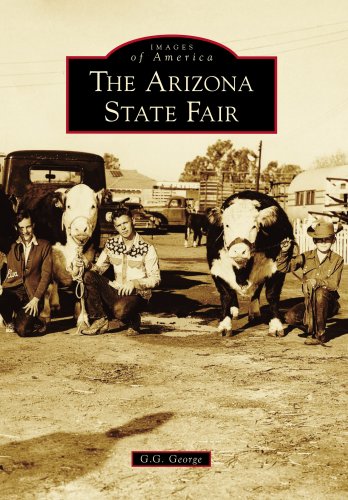
Courtesy Arcadia Publishing
George wrote “The Arizona State Fair,” a book that chronicles the history of the fairgrounds from its formation in 1905 through the Great Depression when the WPA building was built. George wrote the book “to stimulate interest in the preservation of the buildings and the grounds.” According to George, the profit from the books goes toward historic preservation efforts.
“I devote all my time, research, and writing ability to the [Encanto] citizens association who gets the profits from these books to carry on our work,” said George.
According to Jim McPherson, president of the board of directors for the Arizona Preservation Foundation, George was very supportive of this effort from both a preservation and neighborhood standpoint.
“We have been really appreciative of G.G. in undertaking that major project,” said McPherson regarding George’s book.
Moving forward, George said that she will continue to fight to preserve the integrity of historic districts.
“If we don’t understand the past we can’t even plan for the future,” said George.


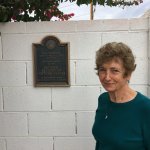

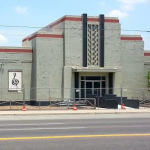

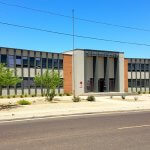
I’m not trying to be rude, but there is no way around G.G. George and the damage her fellow activists have done. The people voted prop 207 in response to their (preservationists) overeach and attack on property rights. George believes that historic preservation zoning should be forced on property owners, if her and her fellow preservationists can persuade the city to place the overlay on an individual structure or district (mob rule).
Excuse me, but did these people pay for these homes they want to “protect?” You don’t have to like what a property owner does with her/his property, but you do have to respect their liberty to be able to alter their property,,even when it goes against your agenda.
George has traded freedom and liberty for tyranny. I agree, we need to protect our past and that is not material buildings, but principles.